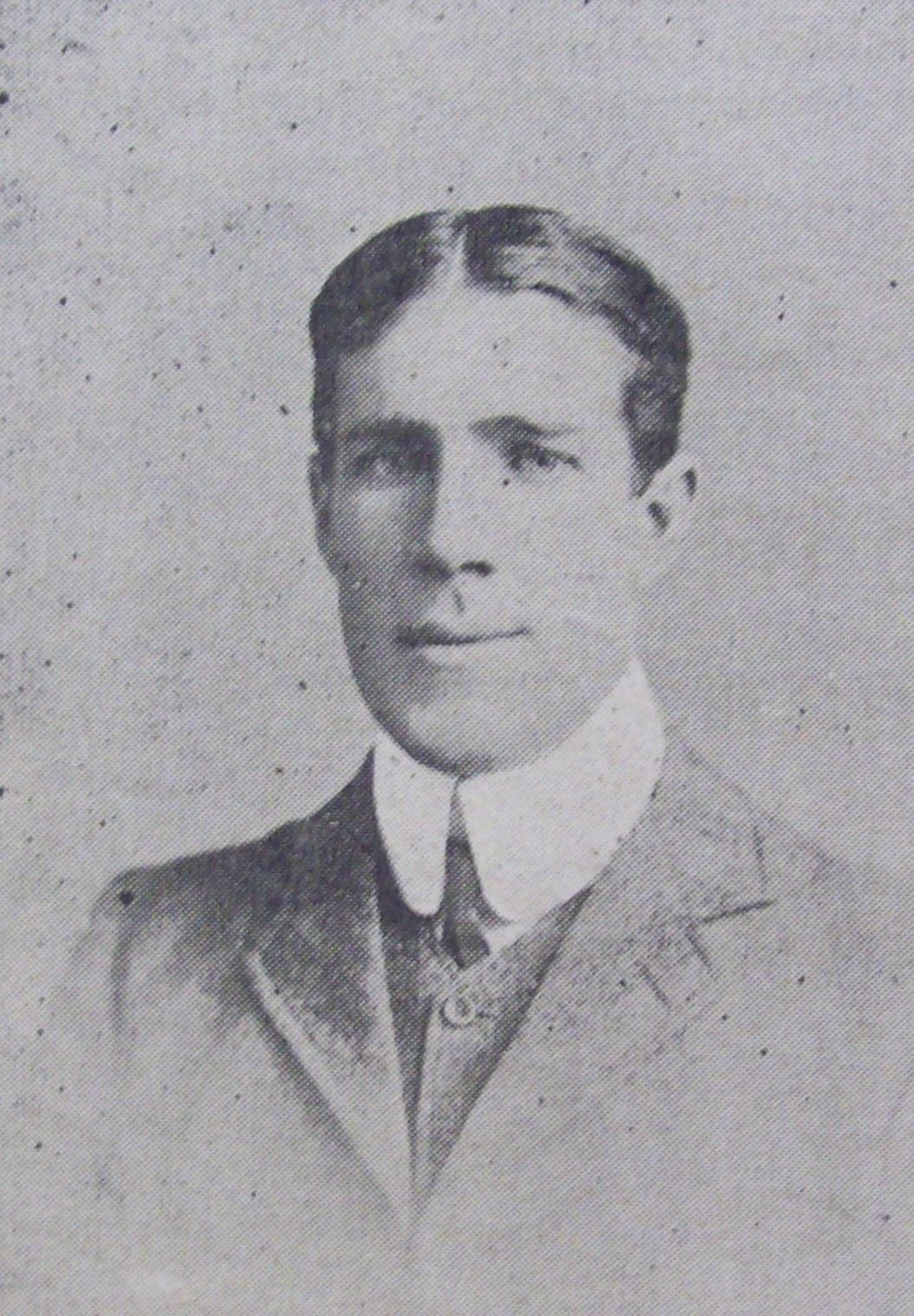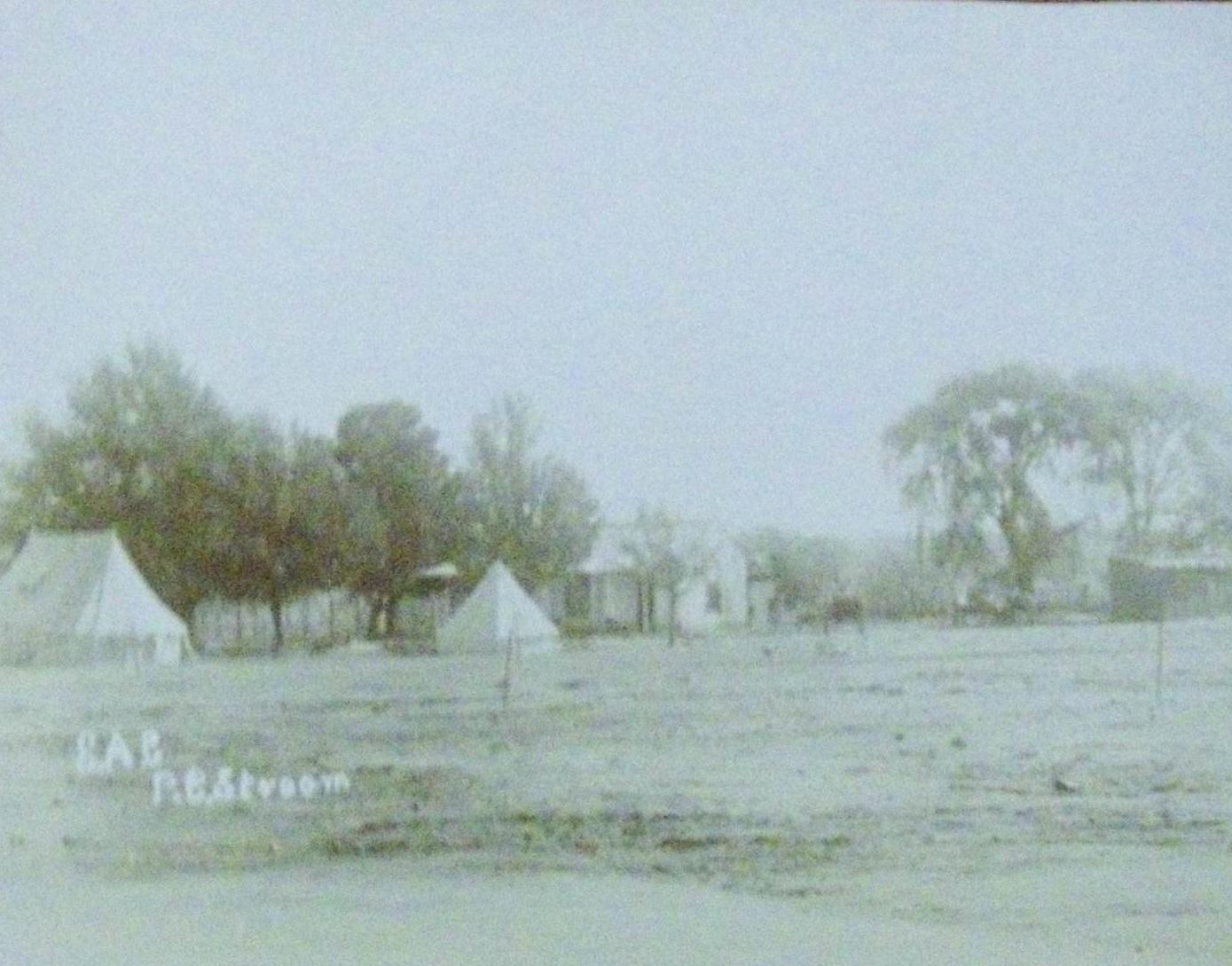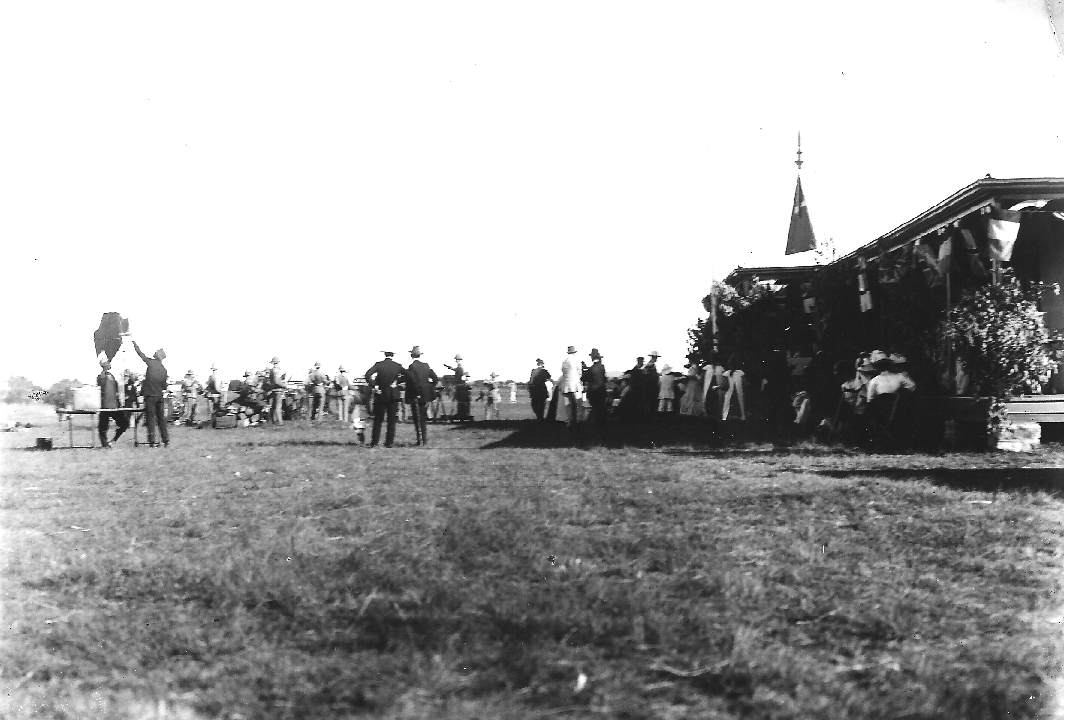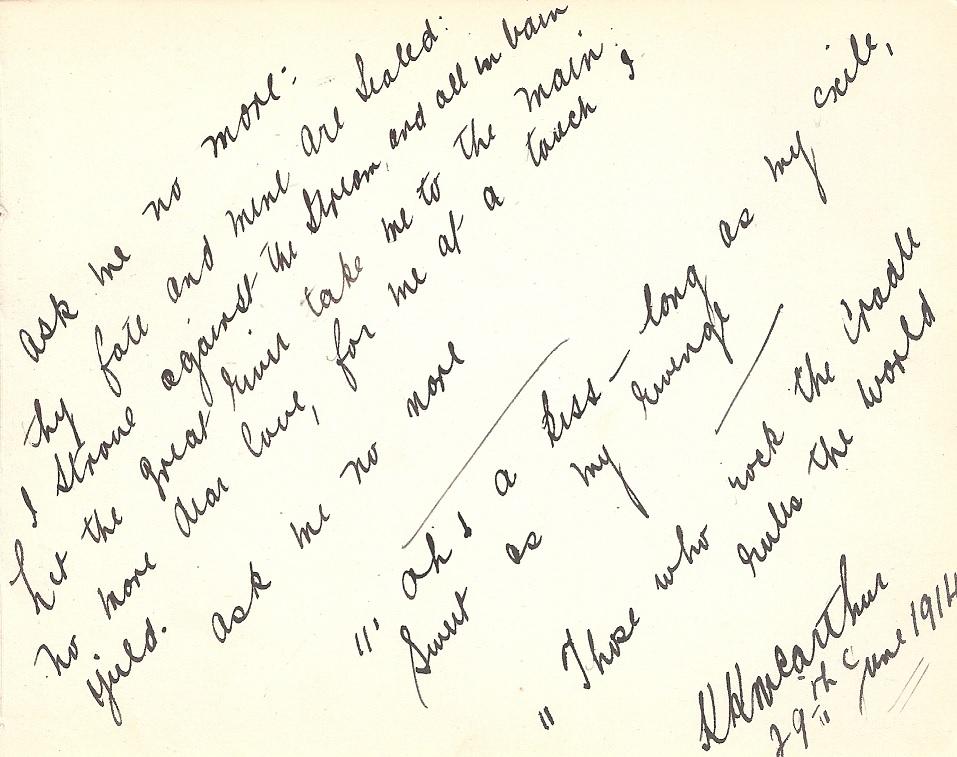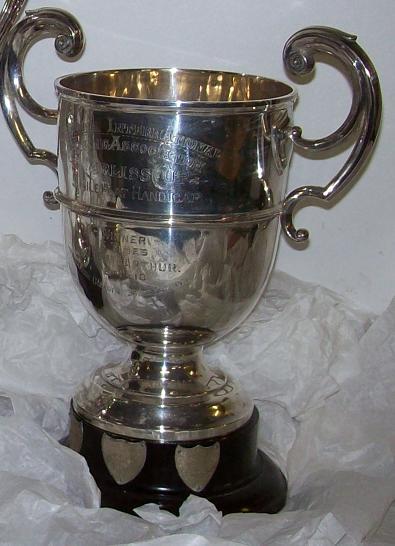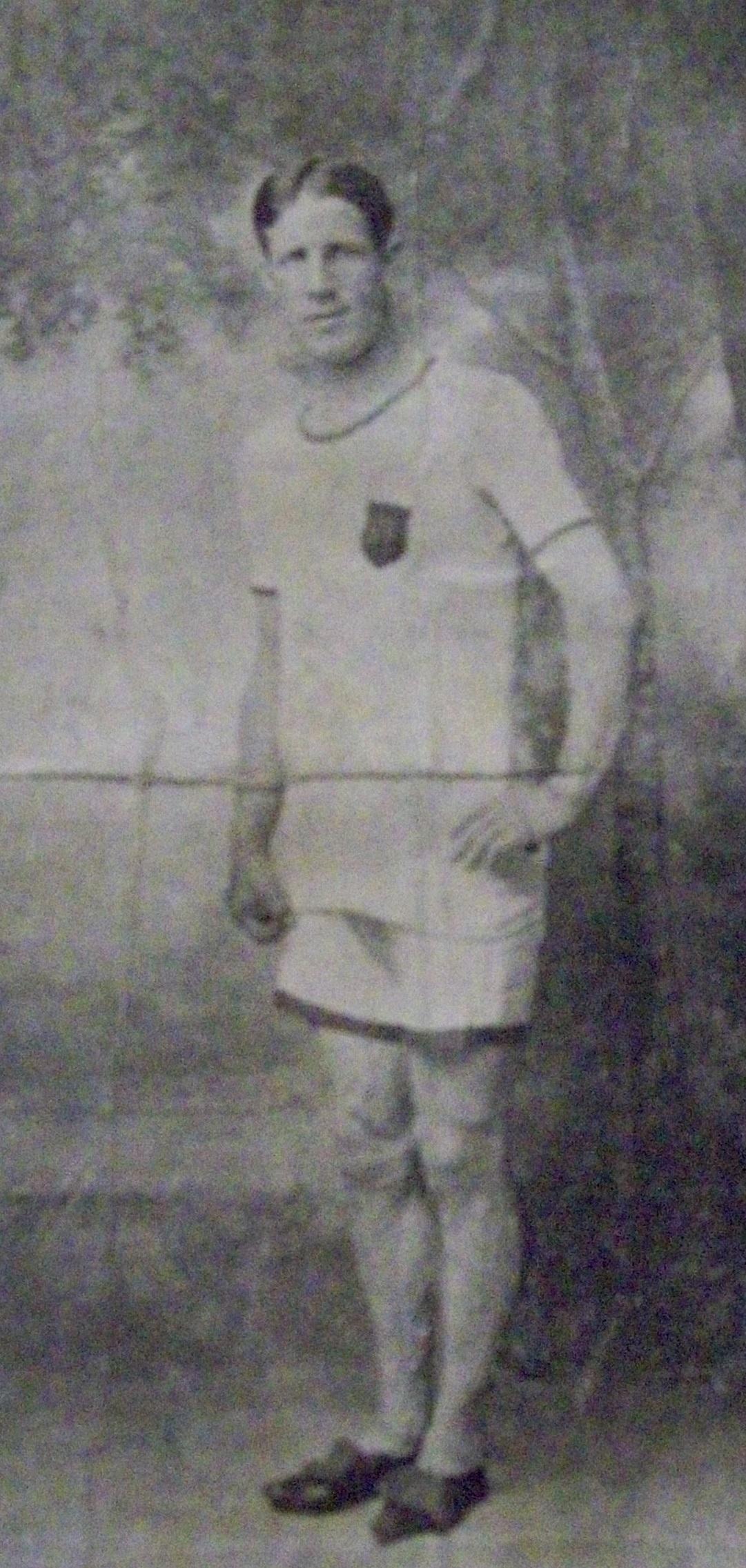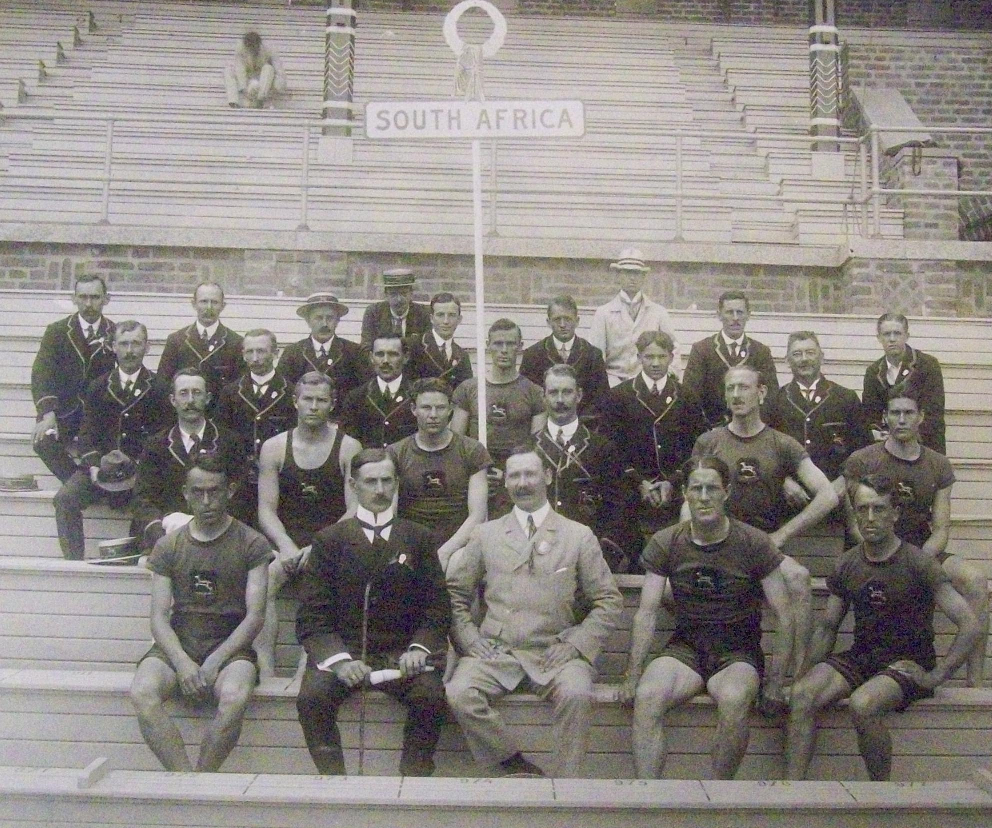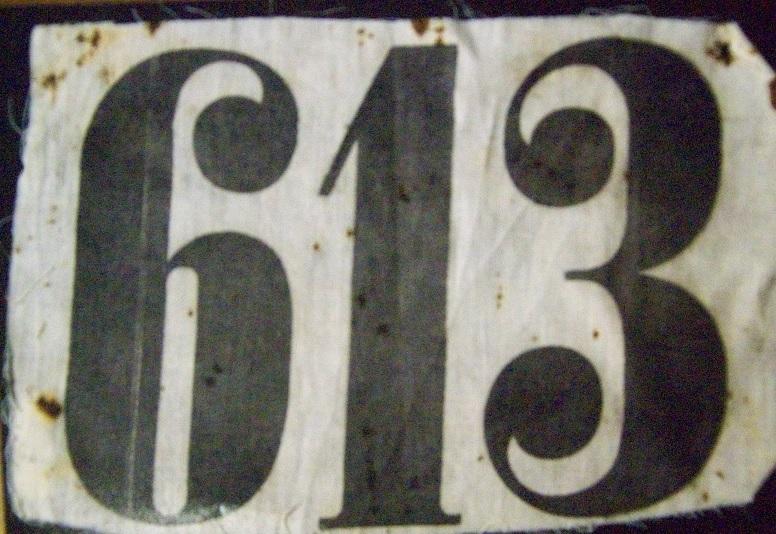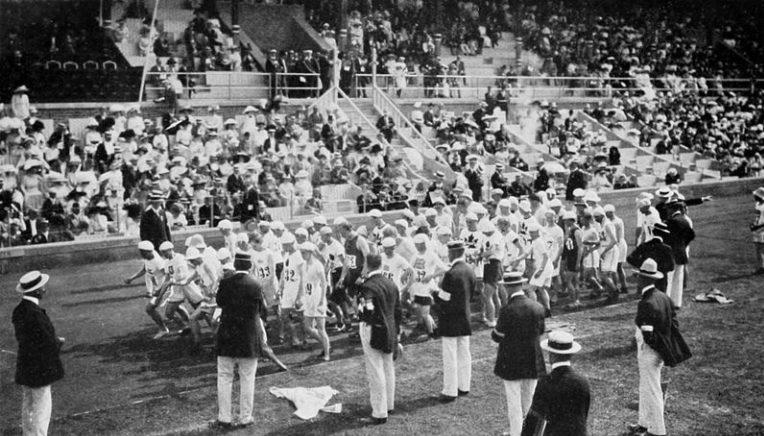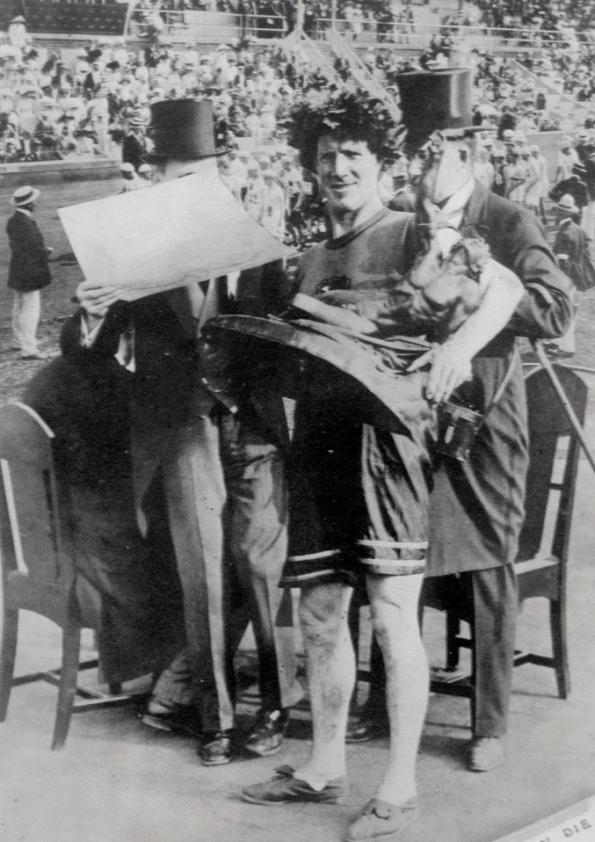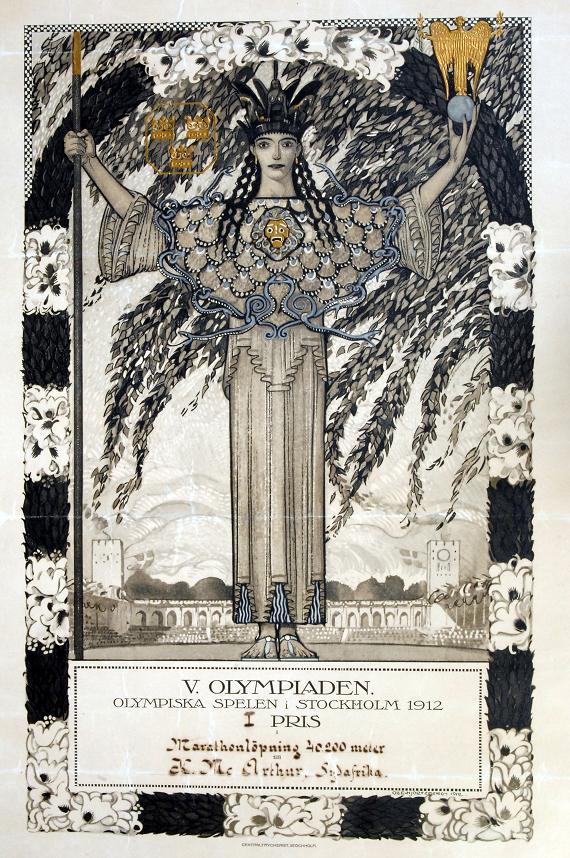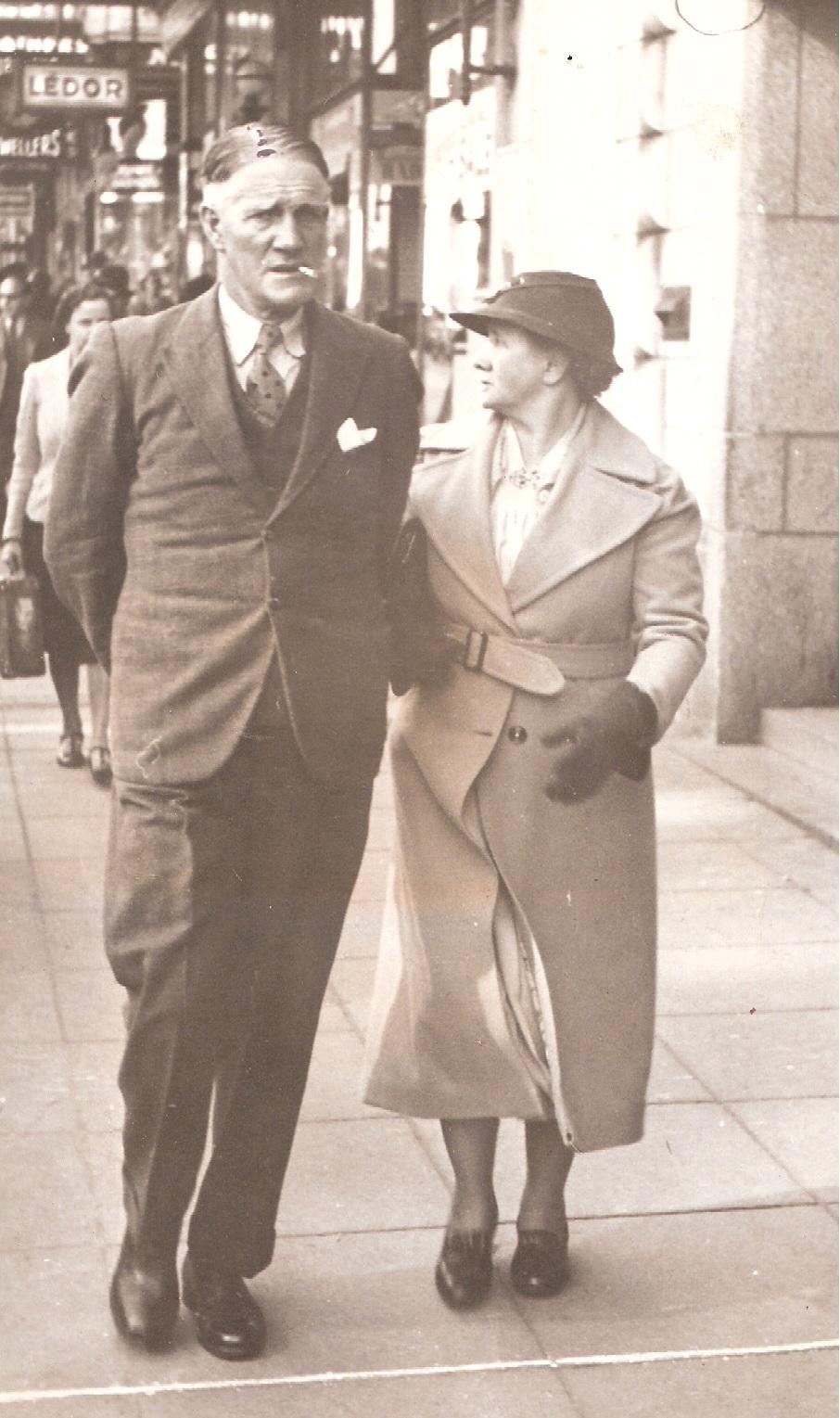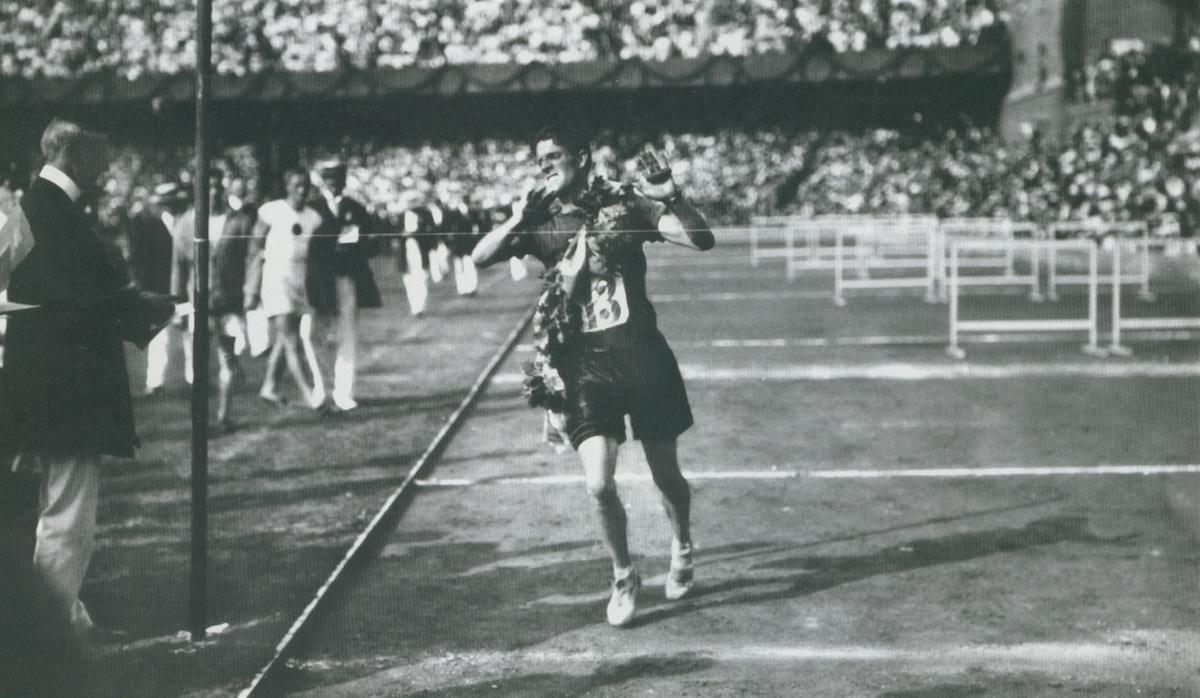
Disclaimer: Any views expressed by individuals and organisations are their own and do not in any way represent the views of The Heritage Portal. If you find any mistakes or historical inaccuracies, please contact the editor.
When the marathon athlete, Kennedy Kane McArthur, won the Olympic marathon on 14 July 1912 in Stockholm, Sweden, he created a record that has never been broken. McArthur, a Potchefstroom policeman and his Springbok team mate, Christopher Gitsham, won the gold and silver medals in the marathon.
Since then, no country in the world could produce the first and second place winners in the Olympic marathon. McArthur ran the 40.2 km in a time of 2:36:54,8 sec. Although the route was two kilometres shorter than the one of 1908, his time was accepted as an Olympic record.
Another record that was never broken is that he is the only athlete in the world that won all the marathons he took part in.
This photo of Kennedy Kane McArthur appeared in the Potchefstroom Herald on 13 February 1910
KK McArthur was born on 10 February 1881 in Dervock, County Antrim in Northern Ireland. He is the second of five children of Robert Jamieson McArthur and Mary Ann McArthur. Before he came to Potchefstroom he was the local postman. He did not participate in athletics in his birth country, but was often observed running while doing his rounds as a postman.
He came to Potchefstroom in approximately 1901 when he was recruited as a member of the newly founded South African Constabulary.
McArthur in Potchefstroom
The South African Constabulary (SAC) was a semi-military police force, founded during the Anglo Boer War by Major-General Robert Baden-Powell after the British forces occupied the old Zuid-Afrikaansche Republiek and Orange Free State. The force began to function in 1901.
At this time the young KK McArthur joined the South African Constabulary and was posted to the Transvaal. McArthur came to South Africa early in 1901.
He was stationed at Kraalkop, Bank and Lindequesdrift, Klerksdorp, Vanwyksrust and Potchefstroom.
The camp of the South African Constabulary in Potchefstroom was situated immediately west of where the Potchefstroom Dam was built in 1908. (Potchefstroom Museum)
Potchefstroom expanded rapidly in the years after the Anglo Boer War. It was transformed into a new town. Hundreds of thousands of pounds of Imperial money were being spent in the building of cantonments, or military camp. The town had three hotels, commercial buildings were erected and there was a rapidly increasing population.
The British troops maintained a strong military presence and the garrison of about 10 000 was the life and soul of Potchefstroom.
There was music on the lawn at the Golf Course on special afternoons while on Sundays massed bands gave promenade performances in the Park, free to the public. Click here to read more about the history of the Alexandra Park.
Photographer August D’Ange D’Astre took this photograph of the opening of the new golf clubhouse in 1909. Note the orchestra on the lawn. The clubhouse was an old military structure dating from the Anglo-Boer War and was bought for £400. It was brought here from Middelburg and served the golf club for more than 30 years.
Ken meets Joey
It was in this whirlwind of parties, concerts and sporting activities of the post-war Potchefstroom that Kennedy Kane McArthur met his future wife. She was Johanna Jacoba Christina Louw. Johanna, later known as Joey, who was born in Barberton on 8 October 1887.
The Louw family came to Potchefstroom from the British concentration camp for mostly Boer women and children at Klerksdorp. Her father died during the War and her mother later married a Mr Wells, whom she described as a “military man”.
Joey met her future husband at a party at her parents’ house and her first impressions of him were not favourable. She likened him to a horse.
Johanna Jacoba Christina Louw. Johanna, later known as Joey, was born in Barberton on 8 October 1887. In her later years she lived in an old age home in Krugersdorp. Her date of death could not be ascertained, but in a 1984 BBC documentary the mayor of Potchefstroom said that shortly before the documentary was made ashes were found on McArthur’s grave in the Potchefstroom cemetery. No explanation could be found about the origins of these ashes and no record could be found in cemeteries in Krugersdorp of Johanna Jacoba Christina McArthur.
Kenneth McArthur, as KK was known in Potchefstroom, wrote this inscription in Joey’s autograph book in 1914. They only got married on 4 May 1921, seven years later.
McArthur the athlete
Soon after McArthur came to South Africa, he started to participate in local athletic competitions.
His first long distance win was a race from Klerksdorp to Potchefstroom. McArthur’s unit was stationed at Klerksdorp at the end of the war. The story is told in a letter in the Potchefstroom Museum. “To keep the soldiers busy a “go-as-you-please” was organized from Klerksdorp to Potchefstroom, a distance of 36 miles (57 km). Somebody persuaded McArthur to enter and he was naturally heavily backed by his pals. He had showered and was on his third beer when the second man came in!”
This beautiful decorative medal is the oldest of K.K. McArthur in the collection of the Potchefstroom Museum. It is dated 1905 and he won it for the TAAA (Transvaal Amateur Athletics Association) ½ Mile Championship.
From 1903 to 1912 McArthur dominated the athletic scene in South Africa, but specifically in the Transvaal colony.
In 1906, 1908 and 1909 he won the Carliss Cup at the TAAA championships for the Five Mile Flat Race and the trophy became his property.
His record for the 10 mile of 52 min 46 1/5 sec, stood for 44 years from 1911 to 1955 and he was in attendance when it was broken at an athletic meeting in Boksburg.
The Carliss Cup, which McArthur could keep after winning it three times is now in the collection of the Potchefstroom Museum.
Mac’s marathons
Another McArthur record that still stands after a century is that he was the only marathon runner ever to have won all the marathons in which he ran:
1) 4 April 1908 – Transvaal Marathon from Krugersdorp to Johannesburg | Distance: 20 miles (32.2 km) | Time: 2:20:30
2) 22 April 1908 – South African marathon (trial for Olympic team) at Cape Town | Distance: 25 miles (40.23 km) | Time: 3:18:27.4
- McArthur won this marathon, but was not selected for the Olympic team. His team mate Charles Hefferon, who came second was chosen for the team, since he was regarded as a better all-round athlete than McArthur. Allegations were also made that the Potchefstroom public did not support McArthur financially, hence his omission from the Olympic team.
3) September 1909 – Wanderers Marathon, Johannesburg | Distance: 24 miles | Time: 3:30:54
4) October 1909 –The Latest marathon, Durban | Distance: Probably 20 miles (32.2 km) | Time: 2:44:36.
- Initially this was a world record, but due to a dispute about the distance, which was later resolved, the record was never acknowledged.
5) 5 November 1910 – Argus Marathon, Cape Town | Distance: 20 miles (32.2 km) | Time: 2:42:58.2
6) 4 July 1912 – Won the Olympic Marathon in Stockholm, Sweden | Distance: 40,200 km | Time: 2:36:54,8
This photo of McArthur in his athletic gear was pasted in a McArthur scrap book which is in the collection of the Potchefstroom Museum. The caption reads: “The Wanderers Marathon Winner. Taken for the “FIELD” by Fred Coop.” Coop was a well-known Potchefstroom photographer at the time.
Olympic Games, Stockholm 1912
The Springbok Team at the 1912 Olympic Games was the most successful of all South African teams to compete in any Olympic Games, considering the number of team members to medals ratio. The team consisted of 21 members and they achieved four gold medals and two silver ones. The picture below was taken in the Olympic Stadium at Stockholm. McArthur sits second from right in the front row. HB Keartland, the athletic coach sits next to McArthur centre front and Christopher Gitsham, who came second in the Olympic marathon sits first from left in the front row. The 1912 Springbok team was later known as the “Bread and Milk” team, due to the fact that not enough funds were raised to provide for all their needs. Apart from a breakfast and supper at their accommodation, they had to use their own funds to buy bread and milk for lunch from vendors on the Stockholm streets.
The Springbok Team at the 1912 Olympic Games
After his death, Mrs Joey McArthur donated some of her husband’s artefacts to the Potchefstroom Museum. This included his Springbok jacket and his competition number. During the McArthur centennial festivities in 2012, the jacket, amongst some of his trophies and medals, travelled to Ireland to be exhibited at the Ballymoney Museum in McArthur’s home county.
1912 Olympic marathon
The Olympic marathon of 1912 was run on Sunday 14 July, on a day that was described as sweltering hot. In dry and dusty conditions, the temperature rose to 32°C. The Olympic stadium, that was able to seat 22 000 spectators, was packed. The marathon distance was 40.20 km and the turning point, at Sollentuna, was exactly halfway.
At the start of the 1912 Olympic marathon, McArthur was roughly in the middle of the group wearing the dark Springbok colours without any headgear and noticeably taller than the rest (Anniversary Marathon)
McArthur’s team mate, Christopher Gitsham reached the halfway mark at Sollentuna in first place. Shortly afterwards he was joined by McArthur and the two ran together until about five kilometres from the end, when Gitsham saw a fountain and turned off to drink water. Afterwards he was beset by cramps and had to walk for about a hundred metres. McArthur took the lead and won. Since Gitsham was expected to be the winner, he did not take this well and thought that McArthur betrayed him.
HB Keartland, athletic coach of the 1912 Springbok Team, described the last minutes of the marathon: "Every eye was riveted on the entrance to the cinder path. A distant lone figure merged from the black tunnel, shambled into the blazing sunlight, hesitated which way to go and then shuffled his weary way to the finish."
There was yet a quick moment of tense anxiety. As the Springbok drew near to the finish straight, an official bumped him in throwing a victory wreath of laurel leaves over his shoulders. Mac staggered and nearly fell. McArthur’s winning time was 2:36:54
It was initially thought that McArthur collapsed after finishing the Olympic marathon, but in an interview with the Herald, after his return to Potchefstroom in September 1912, he described what happened: “I ran across the track onto the grass where I threw myself down.” While he was lying down, Crown Prince Gustav Adolf of Sweden came to congratulate McArthur and pat him on the back.
“I was carried off for sponging and massage treatment, but it was not because I could not have walked; it was the work of the South African chaps, who insisted on picking me up.” The man in uniform to the right is the Swedish prince.
McArthur (right), still wearing the wreath that was thrown around his shoulders, shortly after winning the Olympic marathon, and Christopher Gitsham, his fellow South African who came second, were carried shoulder-high to the dressing rooms by their fellow South Africans.
The caption described this photograph as “prophetic” since it was taken on the ship while the Springbok Team was on their way to Stockholm and shows four of the Springbok gold medallists at the Olympic Games. From left to right: KK McArthur who won the gold medal for the marathon, Rudolph Lewis, who won the gold medal for the 320 kilometre bicycle road race, Charles Lindhurst Winslow and Harold Austin Kitson who respectively won the gold and silver medal for first and second place in the men’s singles in tennis. The two tennis players also won the men’s doubles title.
McArthur’s prizes
McArthur received a certificate, a large and small oak wreath, a gold medal and the floating trophy to the winner of the marathon, a bronze statue of Pheidippides. The oak wreaths and certificate are in the Potchefstroom Museum. The gold medal was initially part of the McArthur bequest, but was apparently later removed by family members. In the acquisition register it is described as: “Round disc, 3,3 cm in diameter, with in front two female figures in loose-hanging cloaks with a laurel wreath between their chairs, with outstretched arms holding on to the wreath.”
The bronze statue of Pheidippides was presented by the King of Greece as a floating trophy to be awarded to the winner of the marathon at the Olympic Games.
Laden down with his many prizes, McArthur can barely carry the Pheidippides statue with his other prizes. The enormous size of the certificate is also visible.
The certificate presented to McArthur at the Olympic Games is a triumph in Art Nouveau art
In 1908 in London, John Hayes of the USA was the first recipient of the Pheidippides statue, after Dorando Pietri of Italy was disqualified. Kenneth McArthur was thus the second recipient of the statue at the Stockholm Olympics.
Two years later the First World War broke out and subsequently the 1916 Olympic Games were cancelled. During this time the Pheidippides statue disappeared. It was later discovered in the Johannesburg Art Gallery and in 1929 the SA Olympic Committee decided to send it back to Lausanne, Switzerland for display at the headquarters of the International Olympic Committee.
McArthur the celeb
From the moment he won the marathon, McArthur was celebrated wherever he went. As mentioned, his friends carried him and Gitsham shoulder high to the dressing rooms and, after they left the stadium, Swedish students carried them shoulder high to their hotel. On the night of the marathon, a banquet attended by 4 000 people was held in the Olympic stadium.
Click here to read about the women of Stockholm’s infatuation with McArthur. This article also cover McArthur’s tumultuous welcome in Potchefstroom.
After the Olympic Games, McArthur visited his birth country where he was again enthusiastically received.
In Potchefstroom, McArthur’s arrival was eagerly awaited at the railway station. His train was hours late and it is said that the whole town came to welcome him. The Potchefstroom Herald reported on his reception in great detail.
A heading from the Potchefstroom Herald of 6 September 1912 that extensively reported on the welcoming of McArthur in Potchefstroom on 4 September 1912.
Old athletes never die, they simply fade away…
McArthur decided not to run in another marathon after the Olympic Games of 1912. An accident a few years later caused injuries to his foot and calf muscles and put a permanent end to his running career.
In 1921 he married Joey Louw, whom he had courted since before 1914. He received land from the Potchefstroom city council as a sign of appreciation for his Olympic achievements and that year the couple had a house built on the property in Kock Street.
In 1931 McArthur retired from the South African Police and the couple returned to Ireland for five years, before they came back to live in South Africa again. Shortly afterwards he started working as the head of the ‘mine police’ at Crown Mines in Johannesburg, where he worked with Nelson Mandela. He held this position for 10 years. This photograph was taken by a street photographer in Johannesburg at the time of the McArthurs’ stay in that city.
After his second retirement the McArthurs moved to Potchefstroom again, where he died in the house in Kock Street on 13 June 1960.
McArthur’s legacy
In remembrance of the town’s first famous athlete, the local athletic stadium was named the Kenneth McArthur Oval in 1977. Although McArthur’s birth names were Kennedy Kane, the people of Potchefstroom always knew him as Kenneth. It was later suggested that somebody had the name wrong, when the stadium was named the Kenneth McArthur Oval, but that was Potchefstroom’s own special name for him.
Kenneth McArthur Oval
When Joey McArthur bequeathed her husband’s athletic artefacts to the Potchefstroom Museum after his death, it was described as “one of the most interesting, important and historically valuable collection of exhibits which the Potchefstroom Museum has received to date.” When the Potchefstroom Museum opened its doors in December 1961, the McArthur collection took pride of place.
This photo of McArthur with prizes he won over the years was in all probability taken in front of his house in the cantonments of Potchefstroom, where he lived at the time of taking part in the Olympic marathon.
Although Kenneth McArthur had his proverbial five seconds of fame in the heady years of 1912, he was never really forgotten, not by the marathon runners of Potchefstroom, nor by his devoted fellow Irishmen in County Antrim in Northern Ireland, nor by the organisers of the Jubilee Marathon of 14 July 2012 in Sweden.
All his achievements though were not handed to him on a silver platter. Kenneth McArthur’s life was marked by many disappointments and controversies and only in overcoming those, was he able to reach the heady ranks.
The disappointments and controversies were many: McArthur’s omission from the 1908 South African Olympic team; his unrecognised world record for the Durban marathon of October 1909 due to the disagreements about the distance of the course; the disappointing visit to England with two cancelled marathons; and allegations of a nervous breakdown shortly before the 1912 Olympic Games.
His comment to a reporter after his Olympic win: “But I have done it now. It’s dogged does it,” sums it all up.
There are many anecdotes about McArthur that I could not include here. He was a smoker his whole life, something unthinkable for today’s athletes. He also received complimentary shoes, which wreaked havoc with his feet.
Click here to read about these in the biography on McArthur which I wrote and self-published in 2012.
About the author: Somewhere in her late teens Lennie realised that writing came easy to her and now, many decades later, she has written and co-written nine books on various aspects of the history of Potchefstroom. This is apart from various supplements and numerous articles, mostly published in the Potchefstroom Herald. Three of her books are available on amazon.com. One is a biography on Kenneth McArthur, Olympic gold medallist in the marathon of 1912. The other two are Afrikaans Christian novels. The supplement on the history of the Herald, at the time of its centenary in 2008, led to a Master’s degree in Communication Studies and one of the books, on NWU PUK Arts, led to a PhD in history. In the process of all this writing she has accumulated a large stash of information and photos on the history of Potchefstroom.
Comments will load below. If for any reason none appear click here for some troubleshooting tips. If you would like to post a comment and need instructions click here.

